One late afternoon in Hogeweyk, on the outskirts of Amsterdam, Theo Visser sat beside his 80-year-old wife, Corrie. His hand was clasped tightly in hers, a habit he'd maintained almost daily for years. His eyes were full of affection, while Corrie, with a faint smile, occasionally squeezed his hand reflexively.
She no longer remembers the past, including their 58-year love story. Theo first met her in a bar, "love at first sight" after a football match. Now, Corrie's memory exists in fragments.
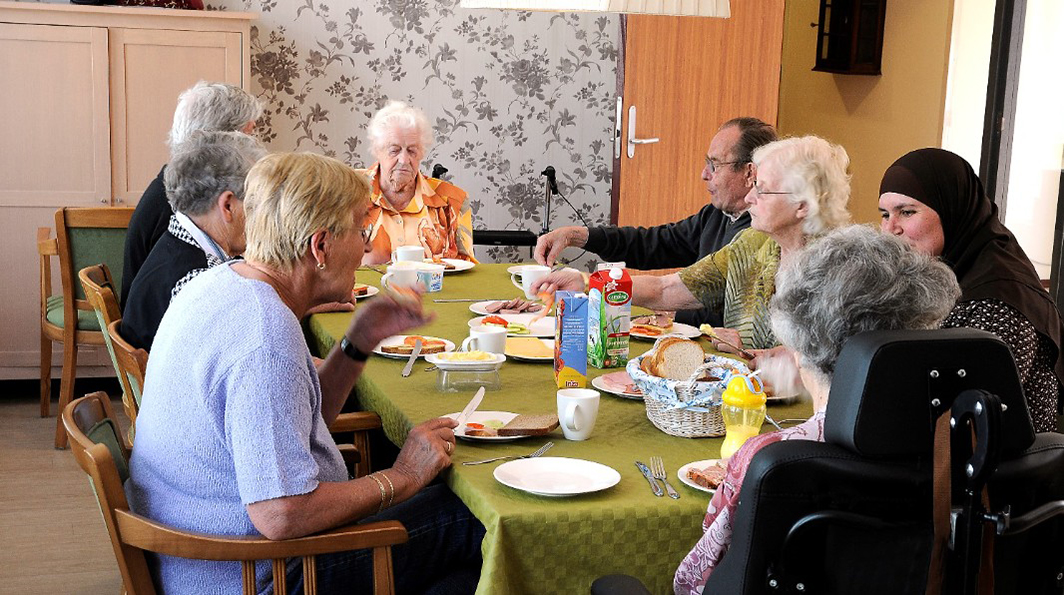 |
The dementia village of Hogeweyk is a complex with restaurants, a beauty salon, a supermarket, and a cinema._*Be Advice* |
Known as the "dementia village," Hogeweyk is unlike a traditional nursing home. It has a supermarket, theater, town square, cafe, and hair salon, all part of an ecosystem designed to allow seniors with severe dementia to live a near-normal life. Residents can stroll freely through the leafy grounds, interact with each other, shop, or attend a show. However, their activities are carefully supervised. Supermarket staff, cashiers, and theater actors are actually trained caregivers. If a resident approaches the single gate leading out, a staff member gently suggests an alternative route, ensuring they remain within the safe environment.
The World Health Organization (WHO) describes "dementia" as an umbrella term for several diseases affecting memory, thinking, and the ability to perform daily activities. Alzheimer's is the most common form. Placing an elderly family member in the village is far less expensive than 24/7 home care. It also alleviates the immense burden on families who lack the time or expertise to care for their loved ones. Corrie was diagnosed with severe dementia, requiring round-the-clock care and support, a prerequisite for admission to Hogeweyk. The burden of her care eventually became too much for Theo and their daughters, so they decided to bring her there.
"This place is perfect. I couldn't find a better place for her. Everything is 100% good," Theo said.
Hogeweyk is a breakthrough, born from the concerns of its founders, notably Yvonne van Amerongen. She recalled the moment her father died suddenly of a heart attack, and her first thought was, "Thank God, he never had to go into a nursing home." She couldn't accept that a healthy, life-loving man would spend his final days in a cold, sterile medical environment. From that urge, along with colleague Jannette Spiering, a veteran geriatric specialist, they conceived the idea of a place where seniors with dementia could live as "normally" as possible.
The Hogeweyk project began in 2002 and officially opened after 6 years of construction. They created a new care model, not solely based on a medical perspective, but focusing on social and psychological factors. Spiering said, "If you lock them up in a facility that looks like a hospital, they will start behaving as if they are in a hospital. They get anxious and want to get out."
In contrast, at Hogeweyk, each house is designed to evoke residents' lifestyles and memories. From furniture and decor to entertainment, everything aims to create a sense of familiarity and security. "You don't even realize who is a resident, who is a volunteer, or a family member. Normalizing the environment is an incredibly big help in reducing stigma," Spiering shared.
However, this model has been likened to "The Truman Show," an elaborate reality TV program where the main character is unaware of the setup. Refuting the criticism, the founders insist they are not deceiving residents. "We have a real society here," Van Amerongen said. "They only feel cheated if we tell them a story that isn't true, and they know it. We don't make things up."
Yet, "making things up" is part of daily life for some residents, like Jo Verhoef. The "loops" in her stories are getting shorter. She constantly asks about someone named Steve Matthew, a character who may be a distant, hazy memory, or a figment of her imagination.
As the global population rapidly ages, models like Hogeweyk are increasingly necessary. According to the WHO, the number of people with dementia worldwide has risen from 35 million in 2008 to over 55 million today and is projected to reach 78 million by 2030. Dr. Tarun Dua, head of the Brain Health Unit at WHO, stated, "This is not a problem that is going to go away."
Finding a cure remains a distant goal, and the pressure of caring for seniors with dementia weighs heavily on families. In the Netherlands, the cost of Hogeweyk is no more expensive than a traditional nursing home, as it is government-funded. This eases the financial and time burdens on family members.
Inspired by Hogeweyk, similar models have emerged worldwide. From Carpe Diem in Norway to NewDirection Care in Australia, these communities aim to provide a more normal and quality life for seniors.
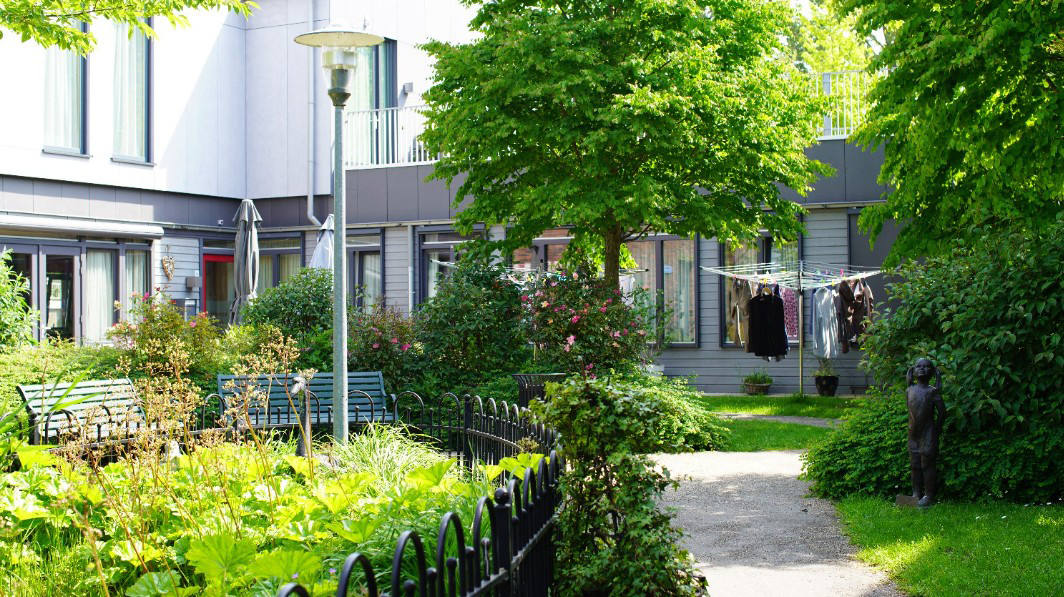 |
Residents can move freely within the village but cannot leave through the single exit gate._*Be Advice* |
In Vietnam, similar concerns are being addressed. During a conference on September 16th to disseminate the Central Committee's Resolution, General Secretary To Lam emphasized that the semi-residential elderly care model needs to become a new social security pillar amid population aging and busy family lives. He hopes for concrete models, encouraging private sector participation in establishing elderly care centers, because "in the mornings, when children and grandchildren go to school and work, the elderly are very lonely at home."
"Childcare is important, but the elderly also need attention, as these solutions contribute to extending lifespan and improving quality of life," the General Secretary said.
For Theo Visser, caring for his wife is now a part of life. Almost every day, he drives 15 km to Hogeweyk to be with Corrie. "I do it for myself," he said. "She still recognizes people, so it's important that I'm here every day."
Although they can't converse, he and his wife sit together, hand in hand. Sometimes she smiles, sometimes she laughs, as if a part of the memory of their past love remains intact, even if it can't be expressed in words.
At Hogeweyk, Corrie may not know where she is, but she always feels at home.
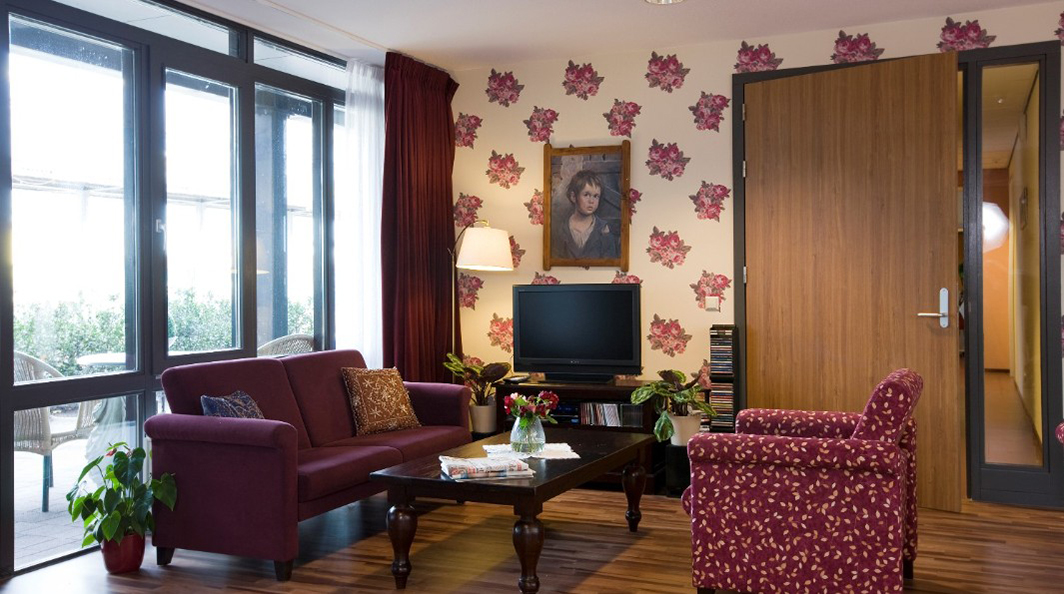 |
Hogeweyk, familiarly known as the "dementia village," is an elderly care facility in Weesp, on the outskirts of Amsterdam, Netherlands. Funded by the Dutch government, the community currently serves 188 residents in 27 houses.
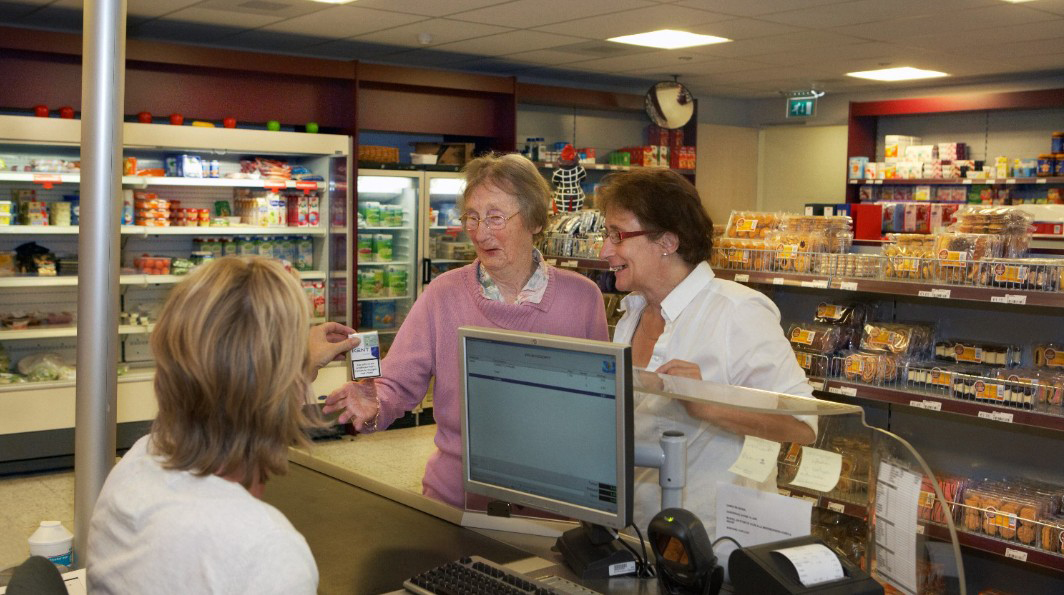 |
All residents at Hogeweyk have severe dementia and are free to move around the village and interact with each other.
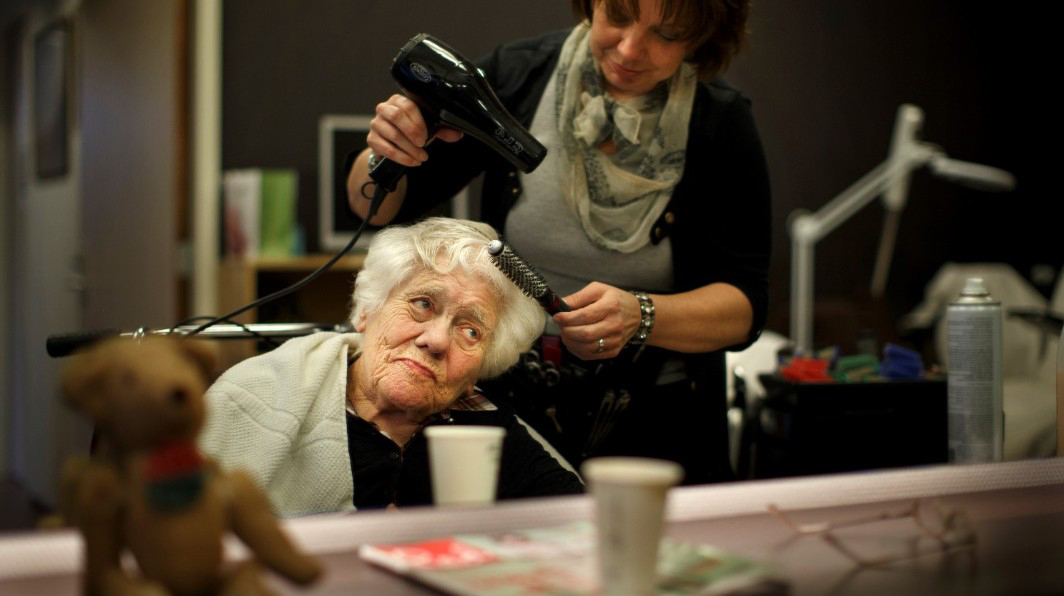 |
Each house, accommodating 6-7 residents, features a living room, kitchen, private bedrooms, laundry room, and outdoor space, along with 24/7 professional support.
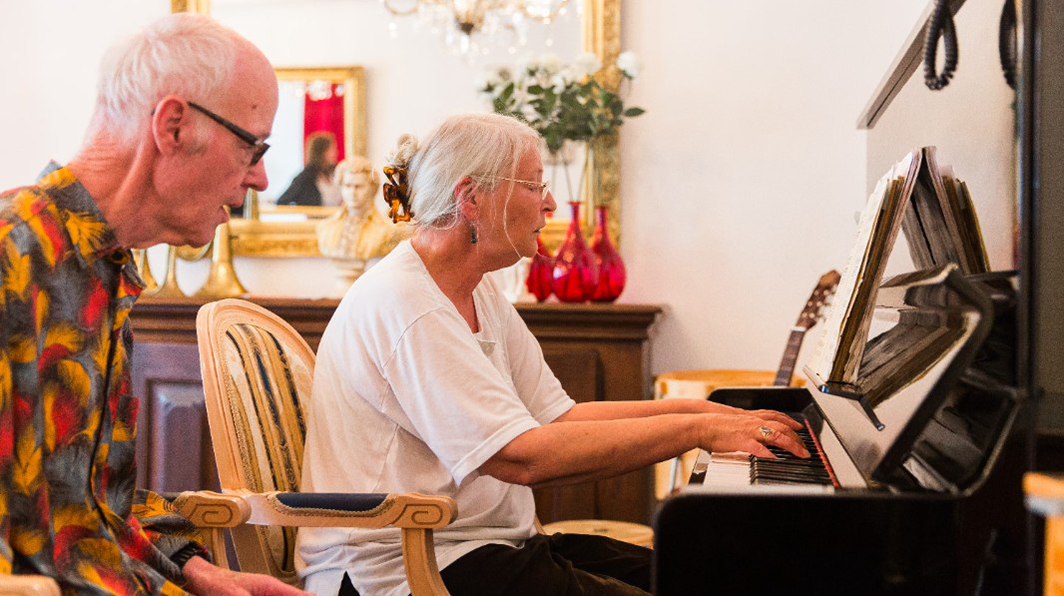 |
Residents can buy groceries, shampoo, or a postcard, but no real money is exchanged, and the cashier is trained to care for dementia patients.
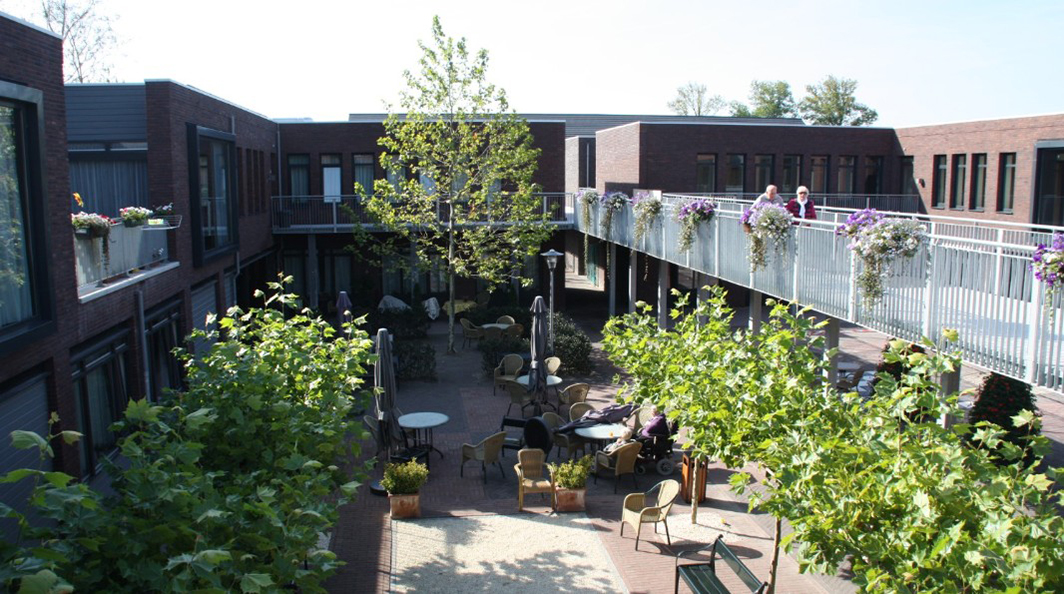 |
Nurses, doctors, psychologists, physiotherapists, and social workers, who greatly outnumber residents, blend into the daily life of the community.
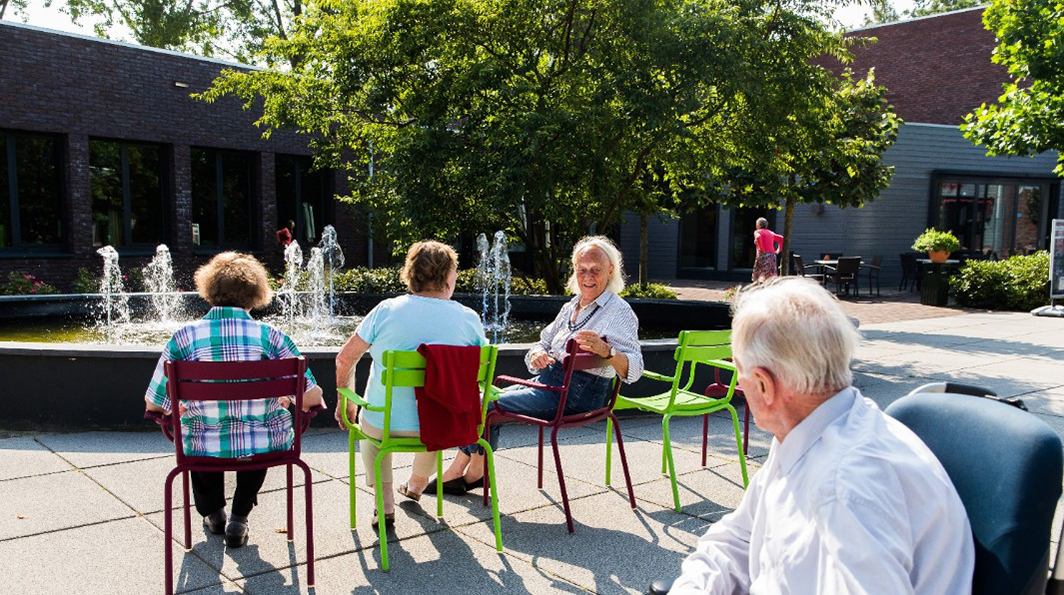 |
Vacancies in the village only occur when a resident passes away.
Binh Minh (*CNN, BBC, Be Advice*)
Photos: _Be Advice_












